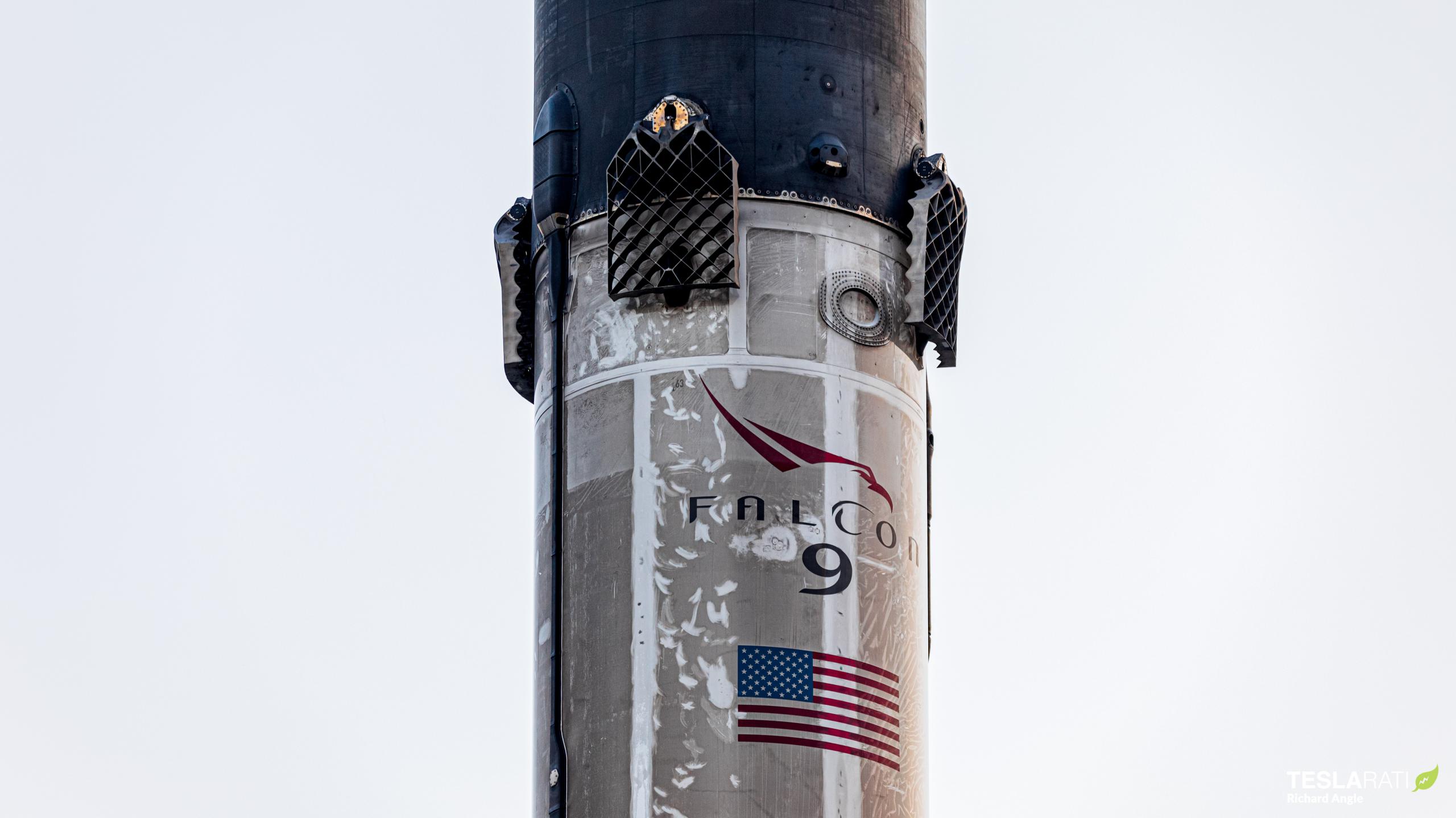
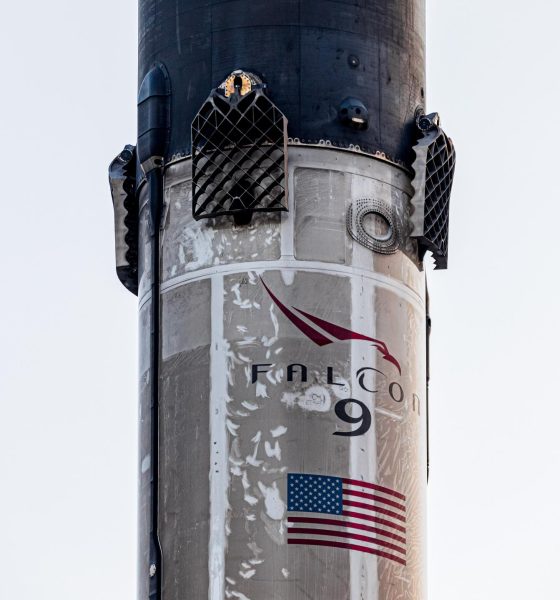
News
SpaceX rocket sails into California port after interplanetary launch
The first SpaceX Falcon 9 booster to help launch a payload directly into interplanetary space has safely arrived at a California port.
On November 24th, Falcon 9 B1063 lifted off from SpaceX’s West Coast SLC-4E launch site for the second time in about a year, successfully sending an expendable upper stage and NASA’s Double Asteroid Redirection Test (DART) spacecraft on their way to interplanetary space. Aside from marking the first time SpaceX has sent a paying customer’s functional spacecraft beyond the gravity ‘well’ of the Earth-Moon system, SpaceX did so with a flight-proven Falcon booster – a first for NASA’s Launch Service Program (LSP).
For Falcon 9 B1063, it was also the first time the booster performed a landing and recovery in the Pacific Ocean, touching down on recently-relocated drone ship Of Course I Still Love You (OCISLY) about 650 km (~400 mi) southeast of the central California coast.
Towed behind tug Scorpius, Falcon 9 B1063 sailed into Port of Long Beach (adjacent to Port of Los Angeles) on drone ship OCISLY a brisk two and a half days after touchdown. SpaceX’s oldest and most storied drone ship, OCISLY supported 52 Falcon booster recovery attempts off the East Coast (45 successful) before the company chose to transfer the vessel to its West Coast recovery fleet. In its relatively old age, OCISLY is underpowered and relatively finicky to operate and maintain in comparison to newer ships Just Read The Instructions (JRTI) and A Shortfall of Gravitas (ASOG). That makes it a perfect fit for SpaceX’s California launch facilities, which are also relatively old and only capable of supporting one Falcon launch per month.
In comparison, JRTI and ASOG are designed to support at least one or two Falcon booster landings every two weeks, while SpaceX’s more modern LC-39A and LC-40 Florida pads have both supported two back-to-back Falcon 9 launches in ten days or less. On the other hand, SLC-4E’s record turnaround is 36 days – almost four times slower – and SpaceX’s best-case goal for the recently reactivated pad is to average one West Coast launch per month. Perhaps due to Starlink production shortages and/or issues with the new V1.5 satellite design, it’s looking increasingly unlikely that SpaceX will be able to get close to that pace in 2021.
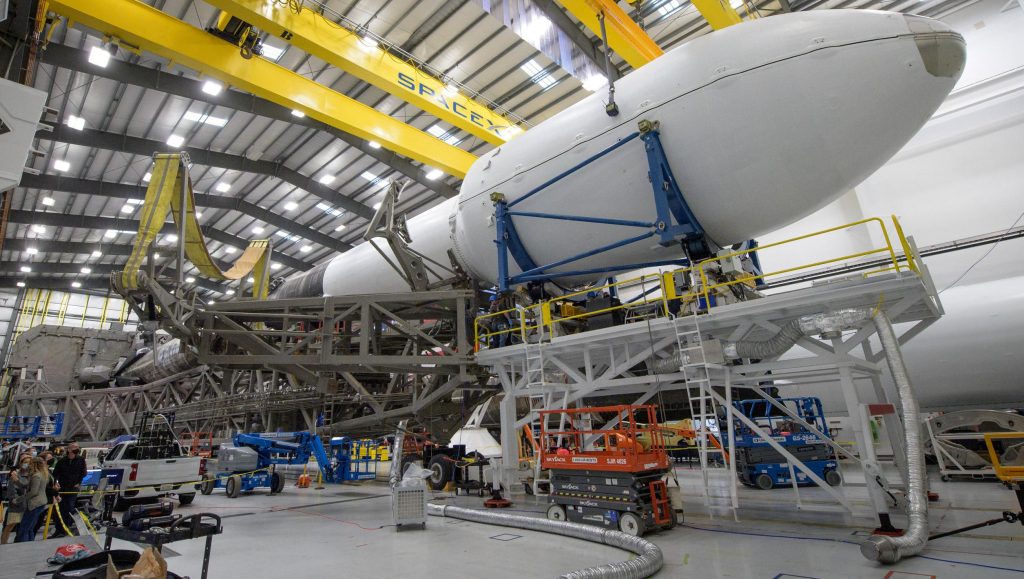
There are still some reasons for optimism, though. Even if SpaceX were to ‘merely’ tie its previous 36-day Vandenberg turnaround record, that would technically preserve the possibility of a launch on December 30th or 31st. More importantly, photos from NASA’s DART launch campaign recently revealed that SpaceX already has an entire second Falcon 9 rocket fully integrated (sans payload) inside its SLC-4E hangar. That rocket – Falcon 9 booster B1051 with a new upper stage already installed – was originally scheduled to launch Starlink 2-3 (polar-orbiting laser-linked satellites) on October 17th.
Several weeks of delays – most likely involving the mission’s Starlink payload – precluded an October launch and ultimately pushed the launch to December once it came within four or five weeks of NASA’s DART mission, which took priority. With any luck, SpaceX has fixed whatever issues grounded the mission in the last six weeks, potentially enabling a West Coast Starlink launch just one month after DART – around the last full week of December.

Elon Musk
Elon Musk shares SpaceX’s directive that destroys a prevalent media narrative
Musk’s comments followed Starlink’s initiatives for people affected by severe flooding in Indonesia and Cyclone Ditwah in Sri Lanka.
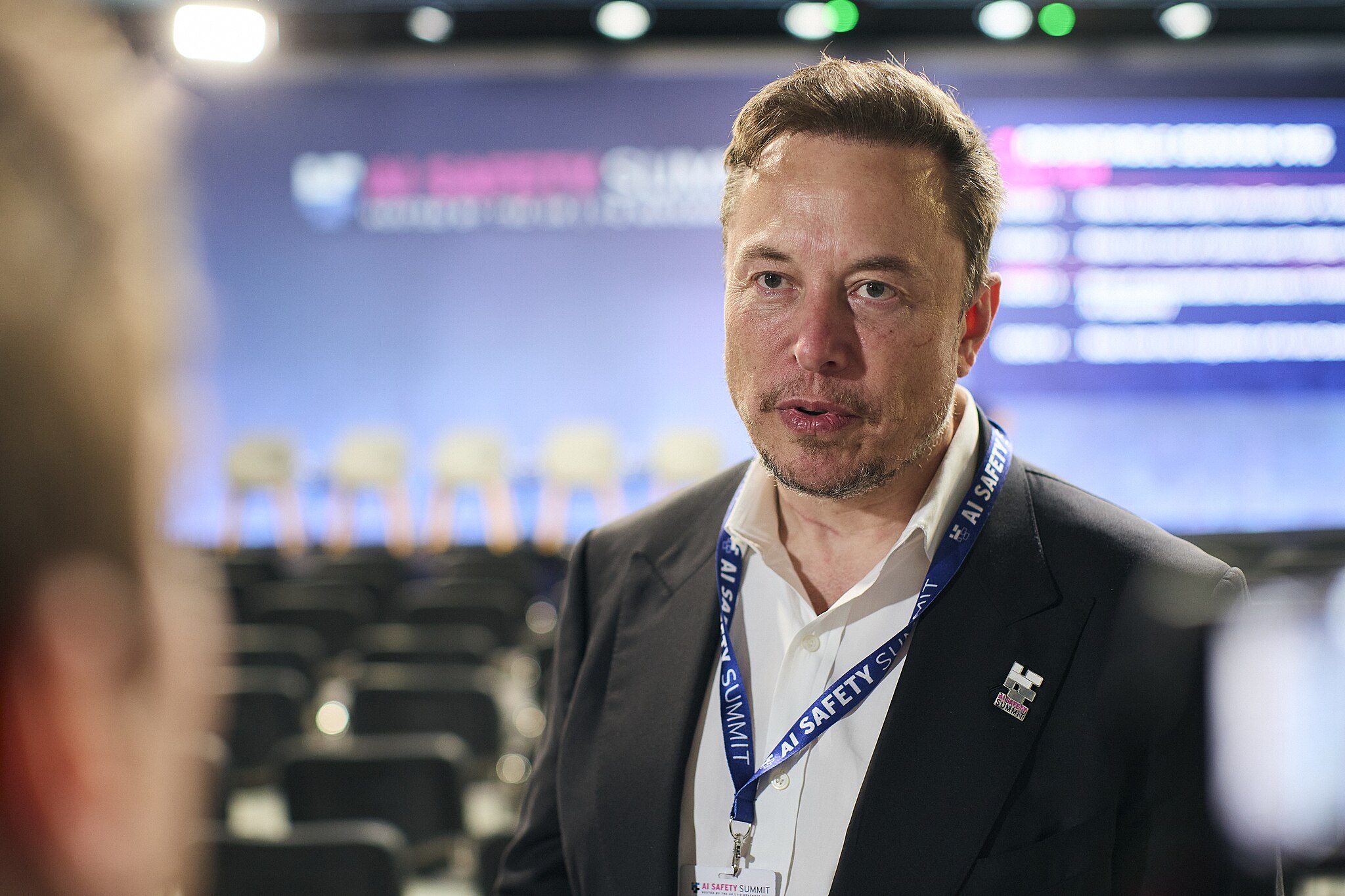
Elon Musk recently shared SpaceX’s standing policy to offer free Starlink service during natural disasters worldwide, highlighting the company’s commitment to pursue aid over profit during times of need.
Musk’s comments followed Starlink’s initiatives for people affected by severe flooding in Indonesia and Cyclone Ditwah in Sri Lanka.
Starlink activates free service in Indonesia and Sri Lanka
Starlink recently announced free service for those impacted by severe flooding in Indonesia’s Sumatra region, partnering with the government to deploy terminals rapidly to the hardest-hit areas. The offer extends to new and existing customers through December, restoring connectivity in zones where traditional networks have failed due to infrastructure damage.
Musk quoted the post on X, writing, “SpaceX standard policy is to make Starlink free whenever there is a natural disaster somewhere in the world. It would not be right to profit from misfortune.”
Starlink extended the same relief to Sri Lanka amid Cyclone Ditwah, coordinating with local authorities for additional support. The cyclone battered the island nation with heavy rains and winds, disrupting communications for thousands. Free access also lasts until year-end, emphasizing Starlink’s role in bridging gaps during crises.
“For those affected by the severe flooding in Indonesia and Sri Lanka in the aftermath of Cyclone Ditwah, Starlink is providing free service to new and existing customers through the end of December 2025. We’re also working with the Indonesian government to rapidly deploy terminals and restore connectivity to the hardest-hit areas on Sumatra, as well as with the Sri Lankan government to provide additional assistance,” Starlink wrote in a post on its official website.
Musk’s companies routinely provide aid
Musk’s firms have a track record of providing critical support in crises, often without fanfare, challenging portrayals of him as a comic book villain intent on enriching himself on the backs of a suffering populace. In January 2024 alone, Tesla opened Superchargers for free in Japan’s Hokuriku region after a magnitude 7.6 earthquake killed at least 55 and injured hundreds.
Similar efforts include Starlink deployments for the 2023 Maui wildfires, 2024 Hurricane Helene in North Carolina, and floods in Texas, where the service was used to help facilitate emergency coordination. These actions, which total millions in waived fees and logistics, demonstrate a proactive ethos among Musk’s companies, with Musk noting in past interviews that such aid stems from engineering solutions over optics.
The initiatives also provide a direct rebuttal of Musk’s characterization on mainstream media, which tends to lean negatively. This has become much more notable in recent years as Musk adopted more conservative policies. These negative sentiments came to a head earlier this year when Tesla stores, vehicles, and even some owners, were attacked during waves of anti-Tesla protests.
News
Tesla Cybertruck welcomed with open arms in South Korea
The event featured interactive demos, a light show with the full Tesla lineup, and announcements including FSD Supervised’s planned rollout to Cybertruck by the end of 2025.
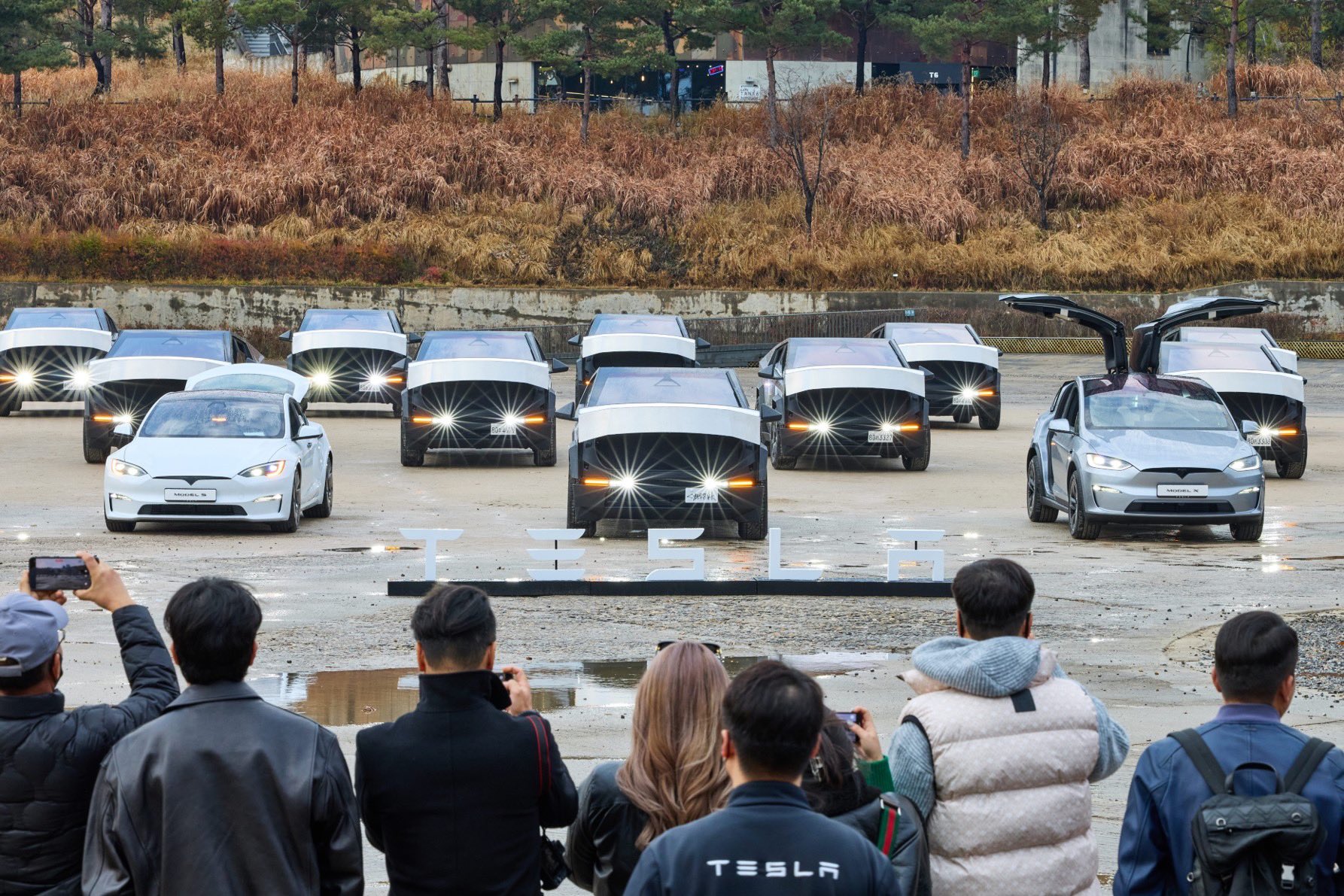
Tesla Korea handed over its first 30 Cybertrucks to owners on Thursday during a ceremonial event at the Cultural Reserve Base in Seoul, marking the all-electric pickup truck’s official debut outside North America.
The event featured interactive demos, a light show with the full Tesla lineup, and announcements including FSD Supervised’s planned rollout to Cybertruck by the end of 2025.
A historic delivery event
The November 27 event transformed a former oil reserve warehouse into a symbolic launchpad for electric mobility. Attended by 30 new owners, the event included hands-on activities such as hammer-strike durability tests, accessory sales, a lucky draw, and group photos. It culminated in a synchronized light show featuring the 30 Cybertrucks alongside Model S, Model 3, Model X, and Model Y vehicles, which drew cheers from attendees.
Yvonne Chan, Tesla APAC Regional Director, joined as a special guest to celebrate the delivery milestone. Tesla Korea President Seo Young-deuk was also in attendance, and shared his optimism for the company’s momentum in the country.
“Korea is currently the third-largest market for Tesla sales worldwide, and this year, for the first time, it has achieved the No. 1 spot in imported car brand sales volume, Tesla Korea is growing at an incredibly rapid pace,” he said. “To repay this love from our customers, Tesla plans to continue investing in the Korean market and enhancing the customer experience.”
FSD Supervised launches in Korea
Seo announced the official introduction of Full Self-Driving (Supervised) in Korea, with Cybertrucks slated for inclusion by the end of 2025, which promoted applause from the event’s attendees. With even the Cybertruck expected to receive FSD this year, Tesla Korea’s fleet could very well become the country’s most advanced vehicles overnight.
Infrastructure growth remains a priority to support Tesla Korea’s expanding fleet. Tesla Korea’s Supercharger network currently includes 166 sites with 1,133 stalls, with V4 units planned for nationwide highway rest areas to boost long-distance travel. The company also operates seven stores and 15 service centers, though plans are underway to double both by 2027. A new store in Incheon’s Songdo district is scheduled to open by December 2025, enhancing accessibility for western Seoul-area customers.
Seo concluded, “Through all-encompassing investments spanning products, charging infrastructure, and service networks, Tesla Korea will deliver the most refined electric vehicle experience to Korean customers.”
News
Tesla China delivery centers packed as Q4 2025 enters its final month
Fresh photos from delivery centers in the country show rows upon rows of Model Ys and Model 3s.
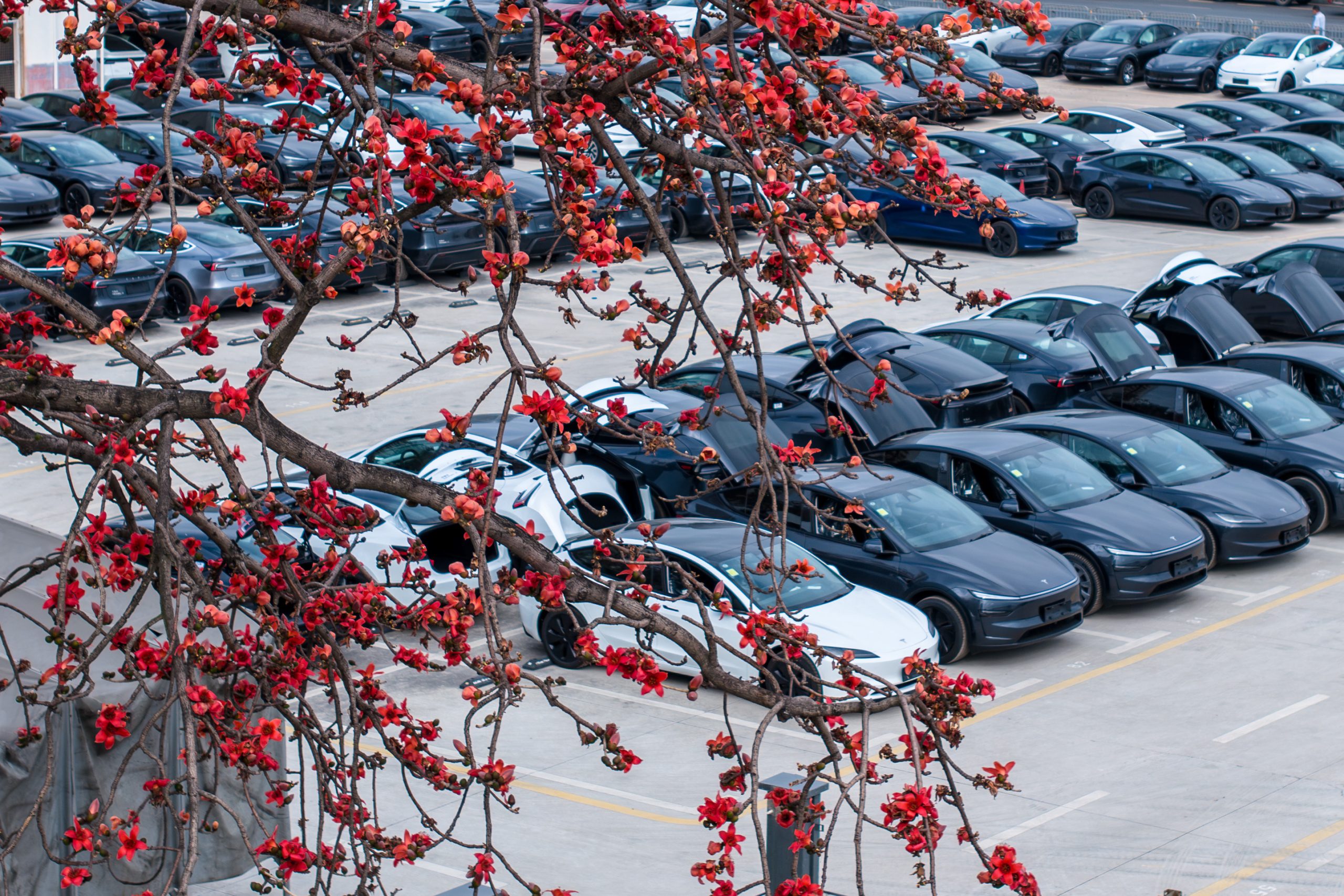
Tesla’s delivery centers in China are filled with vehicles as the company ramps up for its final push in Q4 2025. Fresh photos from delivery centers in the country show rows upon rows of Model Ys and Model 3s, signaling strong end-of-quarter momentum.
A delivery push for Q4 2025
A recent aerial shot from a Tesla delivery center in China captures the company’s efforts to deliver as many vehicles as possible as the year comes to a close. As could be seen in the image, which was posted by on X by Tesla enthusiast Nic Cruz Patane, the facility was filled with numerous Model Y and Model 3 units, each vehicle seemingly ready to be handed over to customers.
Echoing the scene, another post, reportedly from two weeks prior, showed a similar scene in a Shanghai location, which was packed with Model Y units. X user Roberto Nores shared the photo, noting that the image also shows multiple Model Y Ls, a six-seat extended wheelbase version of the popular all-electric crossover.
Towards a strong Q4 finish
China remains Tesla’s volume powerhouse, accounting for a good portion of the company’s global deliveries in recent quarters. That being said, reports did emerge in early November stating that the company only reached 26,006 retail sales during October, as noted in a CNEV Post report. The reasons for this remain to be seen, though a focus on exports could have been a contributing factor.
Tesla China does seem to be hinting at some momentum this November. Just recently, Tesla watchers observed that the order page for the Model Y in China shows a message informing customers that those who wish to guarantee delivery by the end of the year should purchase an inventory unit. This was despite the Model Y RWD and Model Y L showing an estimated delivery timeline of 4-8 weeks, and the Model Y Long Range RWD and Model Y Long Range AWD showing 4-13 weeks.








